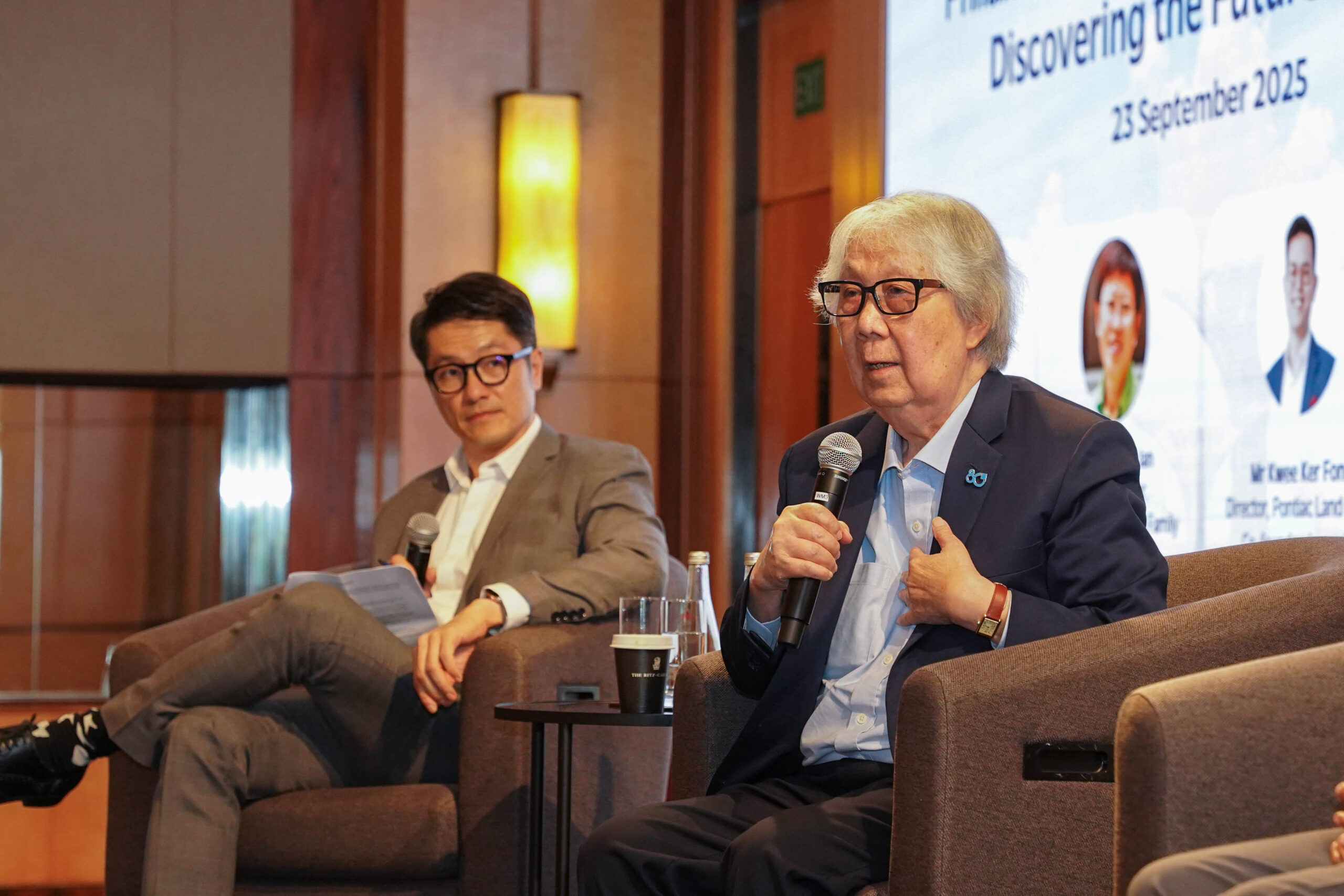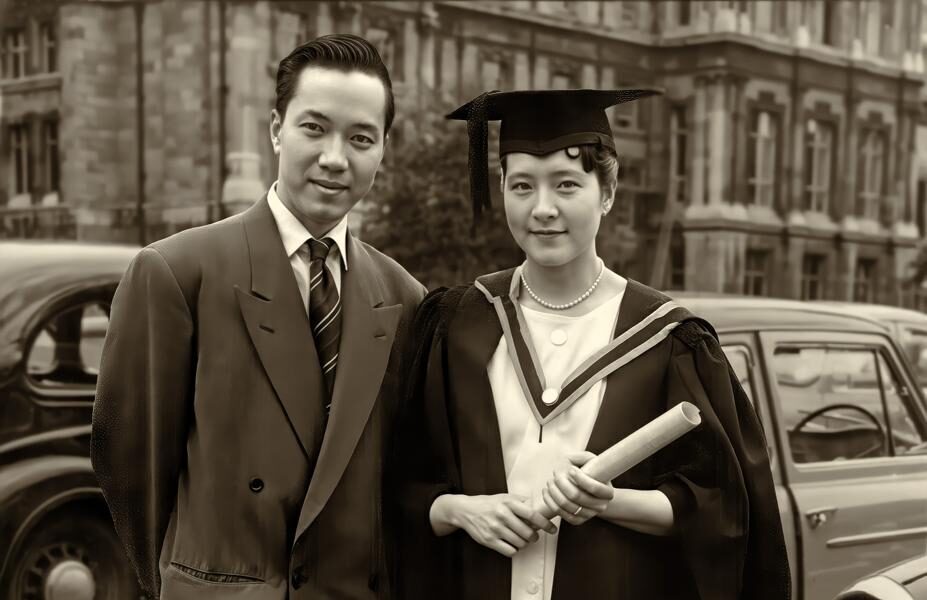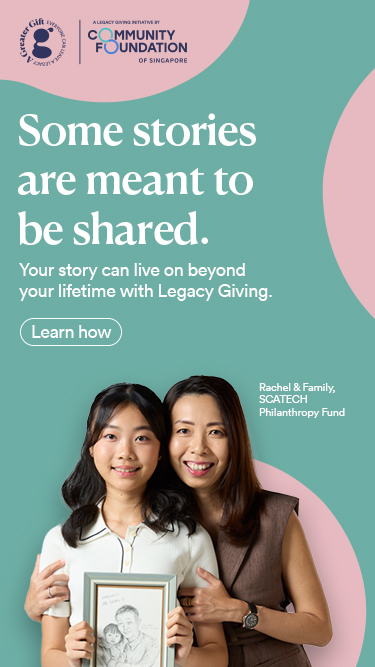Empowering Seniors to Age Well


By 2030, one in four Singaporeans will be 65 or older (Population in Brief, 2022), making Singapore a “super-aged” society. This significant demographic shift means that more people will be required to serve as caregivers, and demand for community services and healthcare support will rise. As our population ages, more emphasis is being placed on allowing seniors to age comfortably in their own homes and communities.
At the Community Foundation of Singapore (CFS), we believe seniors should be able to age with dignity, while pursuing meaningful activities, and having access to personalised care.
To this end, our donors support a range of programmes and activities designed to support seniors and their caregivers.
Caregiving Welfare Association – Home Personal Care
In 2017, the Caregiving Welfare Association (CWA) introduced its Home Personal Care service which aims to provide long-term support for frail seniors living alone, and elderly couples without children. This is to address the growing need for personalised care among the elderly, particularly those without immediate family support.
Professional caregivers conduct comprehensive assessments of clients’ needs and assist with daily activities such as showering, housekeeping, and grocery shopping. They also engage clients in mind-stimulating activities, help with medication reminders, manage appointments, and offer respite care for primary caregivers. One client, Madam Oh (not her real name), says the convenience and familiarity of receiving care at home has significantly reduced her stress and improved her mood.
Thanks to CWA’s service, I can live more comfortably, confidently, and joyfully. Beyond the invaluable assistance, it’s the warmth of companionship that truly touches my heart.
Mdm Oh
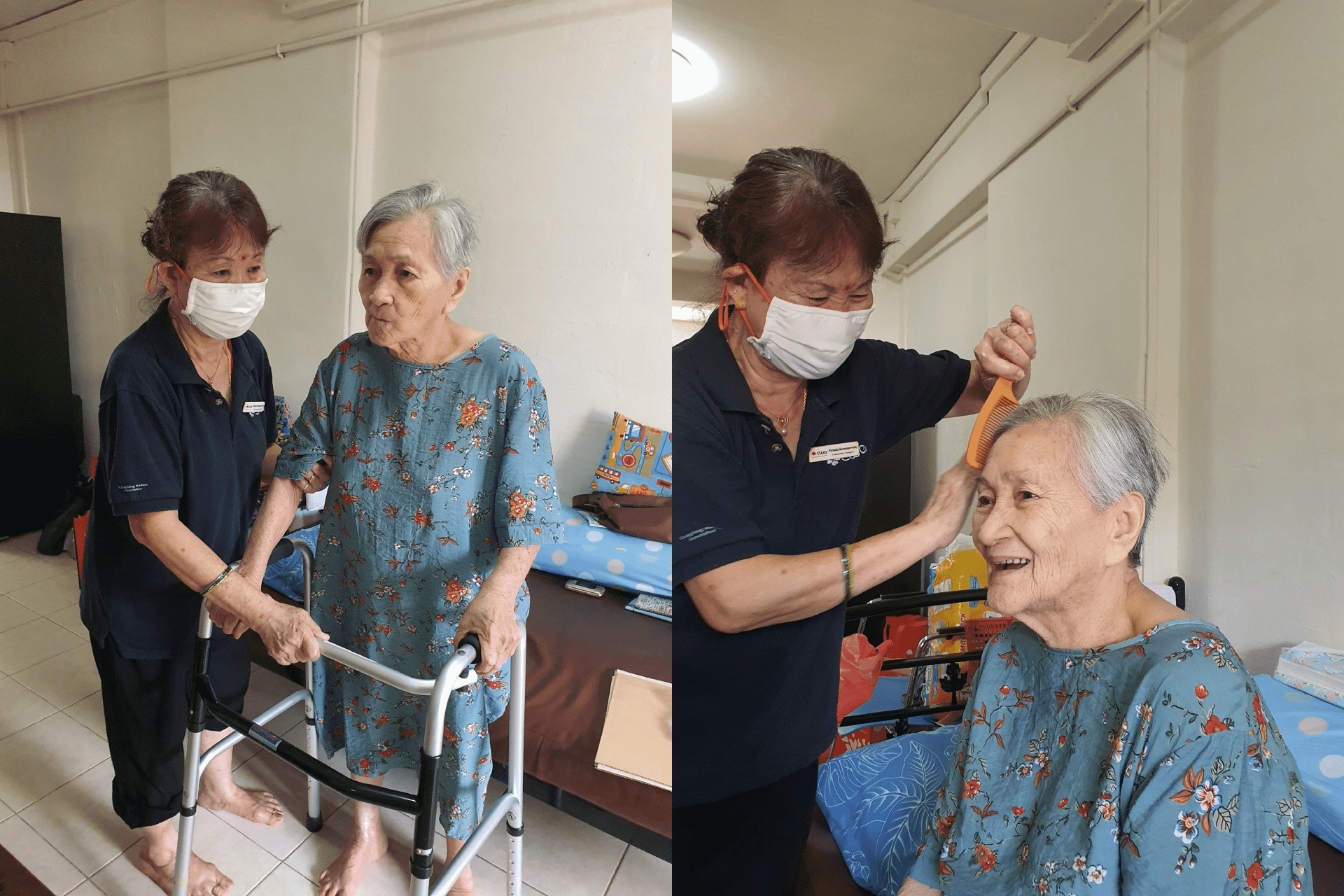
St Joseph’s Home – Dusk to Dawn Night Respite Programme
St Joseph’s Home offers several programmes, including their Dusk to Dawn Night Respite Programme. This allows families caring for an elder with conditions like dementia or sundowning syndrome to have some night respite. Clients can use the service a few nights a week or on an ad-hoc basis. The facility prioritises clients’ well-being by providing a restful environment and keeps them engaged and entertained.

Yong-en Care Centre – Home Care Service
To support seniors with limited mobility and chronic health conditions as they recover at home following a hospital discharge, the nurses and support staff at Yong-en Care Center’s Home Care Service closely monitor patients’ health, administer medications and medical procedures, and provide virtual support to patients and caregivers through tele-consultations. In addition to addressing medical needs, the staff also assist clients in navigating support systems to apply for necessary funding and subsidies, and coordinates with social service professionals from Yong-en or external agencies should follow-up be needed. A beneficiary of the Home Care Service shared the following thoughts: “When people ask about Yong-en, I would always tell them that the staff are great and really have the heart for seniors like me.”
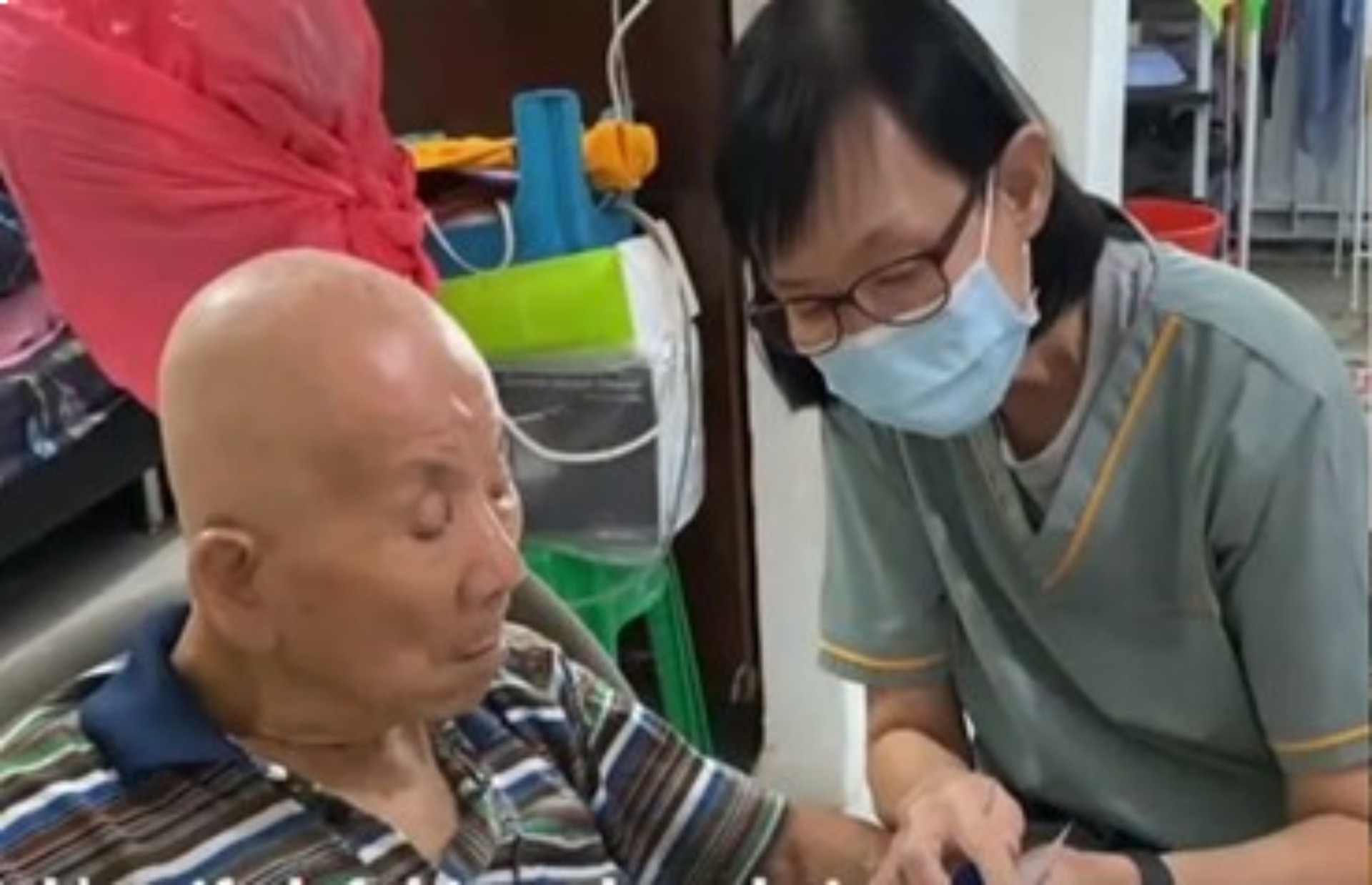
Thanks to programmes like these, seniors in Singapore can receive quality care, empowering them to age in place with peace of mind. Another community-focused effort launched by CFS in partnership with the Agency for Integrated Care (AIC) is the FUN! Fund. The FUN! fund supports initiatives that inject fun for seniors receiving Community Care services, helping them design novel and impactful programmes that boost the well-being of older adults. You can read more about the fund here.
To learn more about the causes we support and how to contribute, visit https://cf.org.sg/charities/causes-beneficiaries-we-support/
References
Population in brief 2022 (2022) The Strategy Group in the Prime Minister’s Office. Available at: https://www.strategygroup.gov.sg/files/media-centre/publications/population-in-brief-2022.pdf
By 2030, one in four Singaporeans will be 65 or older (Population in Brief, 2022), making Singapore a “super-aged” society. This significant demographic shift means that more people will be required to serve as caregivers, and demand for community services and healthcare support will rise. As our population ages, more emphasis is being placed on allowing seniors to age comfortably in their own homes and communities.
At the Community Foundation of Singapore (CFS), we believe seniors should be able to age with dignity, while pursuing meaningful activities, and having access to personalised care.
To this end, our donors support a range of programmes and activities designed to support seniors and their caregivers.
Caregiving Welfare Association – Home Personal Care
In 2017, the Caregiving Welfare Association (CWA) introduced its Home Personal Care service which aims to provide long-term support for frail seniors living alone, and elderly couples without children. This is to address the growing need for personalised care among the elderly, particularly those without immediate family support.
Professional caregivers conduct comprehensive assessments of clients’ needs and assist with daily activities such as showering, housekeeping, and grocery shopping. They also engage clients in mind-stimulating activities, help with medication reminders, manage appointments, and offer respite care for primary caregivers. One client, Madam Oh (not her real name), says the convenience and familiarity of receiving care at home has significantly reduced her stress and improved her mood.
Thanks to CWA's service, I can live more comfortably, confidently, and joyfully. Beyond the invaluable assistance, it's the warmth of companionship that truly touches my heart.
Mdm Oh

St Joseph’s Home – Dusk to Dawn Night Respite Programme
St Joseph’s Home offers several programmes, including their Dusk to Dawn Night Respite Programme. This allows families caring for an elder with conditions like dementia or sundowning syndrome to have some night respite. Clients can use the service a few nights a week or on an ad-hoc basis. The facility prioritises clients’ well-being by providing a restful environment and keeps them engaged and entertained.

Yong-en Care Centre – Home Care Service
To support seniors with limited mobility and chronic health conditions as they recover at home following a hospital discharge, the nurses and support staff at Yong-en Care Center’s Home Care Service closely monitor patients’ health, administer medications and medical procedures, and provide virtual support to patients and caregivers through tele-consultations. In addition to addressing medical needs, the staff also assist clients in navigating support systems to apply for necessary funding and subsidies, and coordinates with social service professionals from Yong-en or external agencies should follow-up be needed. A beneficiary of the Home Care Service shared the following thoughts: “When people ask about Yong-en, I would always tell them that the staff are great and really have the heart for seniors like me.”

Thanks to programmes like these, seniors in Singapore can receive quality care, empowering them to age in place with peace of mind. Another community-focused effort launched by CFS in partnership with the Agency for Integrated Care (AIC) is the FUN! Fund. The FUN! fund supports initiatives that inject fun for seniors receiving Community Care services, helping them design novel and impactful programmes that boost the well-being of older adults. You can read more about the fund here.
To learn more about the causes we support and how to contribute, visit https://cf.org.sg/charities/causes-beneficiaries-we-support/
References
Population in brief 2022 (2022) The Strategy Group in the Prime Minister’s Office. Available at: https://www.strategygroup.gov.sg/files/media-centre/publications/population-in-brief-2022.pdf
- Related Topics For You: AGEING WELL, CAREGIVER SUPPORT, CHARITY STORIES, COMMUNITY IMPACT FUND, FUN! FUND, HEALTH, PROMOTING HEALTHCARE, SENIORS, STORIES OF IMPACT

